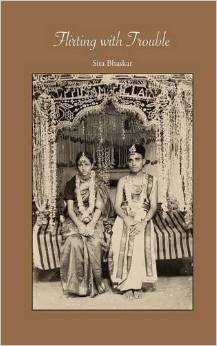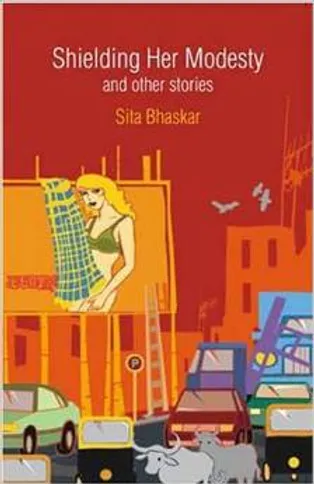
Rukmini Aunty & the R.K. Narayan Fan Club
Rukmini aunty’s newly built house in Mysore is near a dilapidated relic with its roof caved in, marring the view from her specially designed Zen-like meditation nook. She abhors the house that reeks of litigation and lawsuits and wants it gone, until she discovers that the house belonged to the illustrious writer, R.K. Narayan. It is close to being torn down brick by brick, when the city authorities step in and designate it as a Heritage building and stop the demolition. The fate of Narayan’s abode hangs between the builder’s scalpel and the limited coffers of the city, while they scramble for funds to buy it from his heirs at the prevailing market rate. Only Rukmini aunty and the ‘R.K. Narayan Fan Club’ ladies group in her neighbourhood can now save the house.

Tara and Sandy: Slow Dance of Infinite Stars
This novel is a joint work of Sabarna Roy and Sita Bhaskar, based on the ballad "Tara" which Sabarna had written and published in his first book, Pentacles, in 2010.
The ballad Tara describes the meeting of two high schoolmates, namely, Tara and Sandy, who fleetingly meet at the Delhi Airport after twenty-six years of leaving high school. A universe opens up in front of them. They exchange their contact details, but surprisingly, they do not contact each other for the next twelve years.
On January 4, 2022, Sandy writes to Tara as if in search of an anchor. Sandy writes through a series of letters written in a stream of consciousness as if running through a serrated jungle.

Flirting with Trouble
When Bina fills her suitcase with pink underwear and flies to India to combat the anti-Valentine’s Day rhetoric of Hindu fundamentalists, she feels like Mahatma Gandhi going to Buckingham Palace in homespun loincloth to demand independence. One non-violent revolution in a homespun loincloth; seventy-five years later, another non-violent revolution in a thong.
From pink thongs in Non-violent Thong Movement to marriage by numbers in Swayamvaram where brides and grooms are plucked off the streets on the political whim of a capricious Chief Minister to the small leap between a consensual affair and sexual harassment in Bank on it, this intricate cross-cultural collection draws the reader into lives of men and women who strive to make themselves heard amidst the shrill political rhetoric that threatens to drown them out.
Set in India and America, the interlaced stories in Flirting with Trouble are woven through several significant events – National Emergency and loss of civil rights in India in the seventies, riots after the assassination of Prime Minister Indira Gandhi by her bodyguards in the eighties, the buzz of the internet boom in the nineties, contradictions about national and personal identity in the new century.

Shielding her Modesty
Modern India and its people spilling over into contemporary life in the USA and jostled between the pull of both cultures form the backdrop of these remarkable stories. They range from the absolute comedy and hypocrisy that underlies some types of human interaction to the poignant ones on redemption born out of the crucibles of pain and suffering.
In one story is Muruga, an illiterate billboard painter, with a lascivious eye on his billboard creation, absolutely at odds with the legion of shameless gawkers at his half-clad sultry siren. In another is Tara, drowning in abject grief after the death of her newborn and trying to find solace in her baby's gravesite. And then there is the irrepressible Naresh, whose love for Pushpa harks back to a not-so-innocent time of lurid teenage fantasy and all the delicate implications therein that make it hard for him to confess his love to her.
Taken together, these stories shape a distinct palette of cultural vignettes that inform the reader of the Indo-American experience. While they entertain, these stories subtly uncover the myriad contradictions and commonalities deeply embedded in looking at things with an Indian eye while adapting to Western mores and thought.